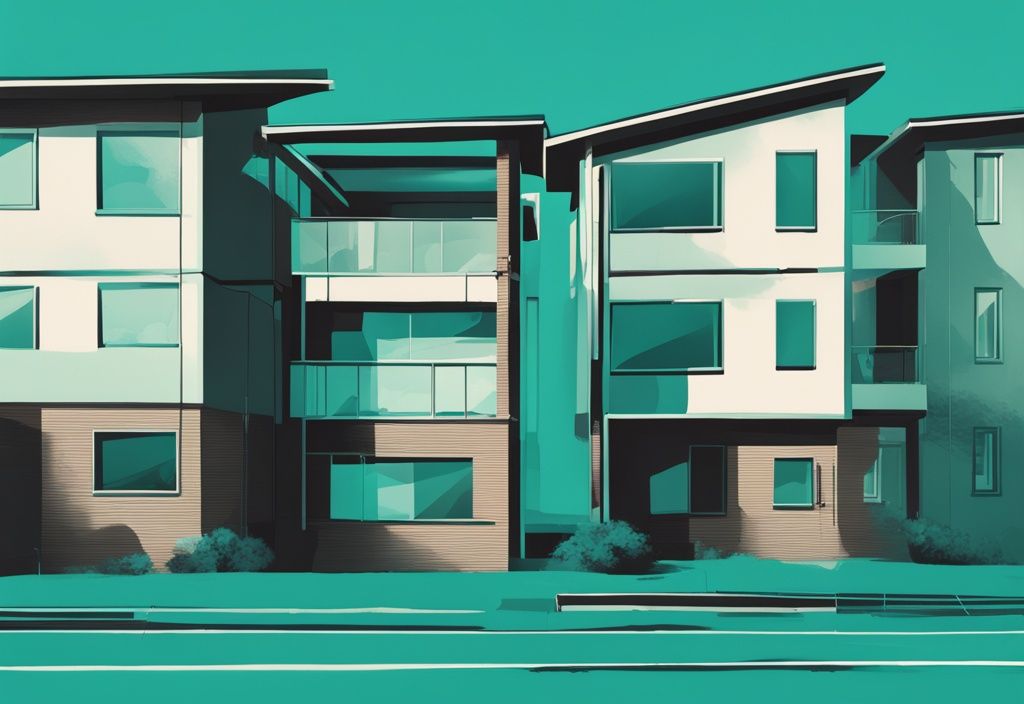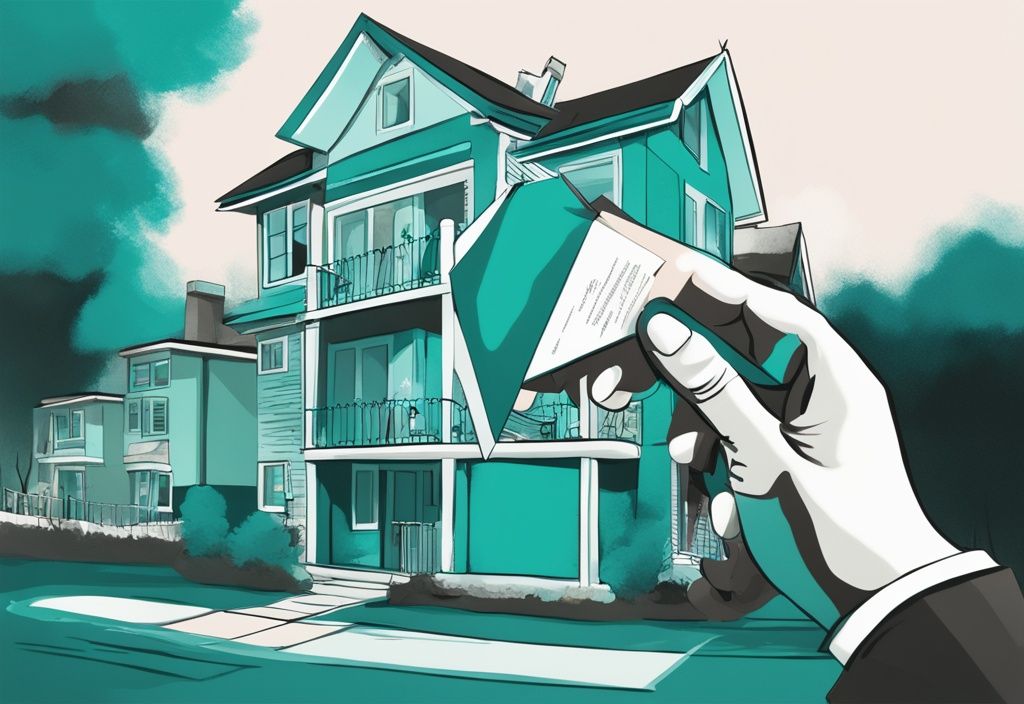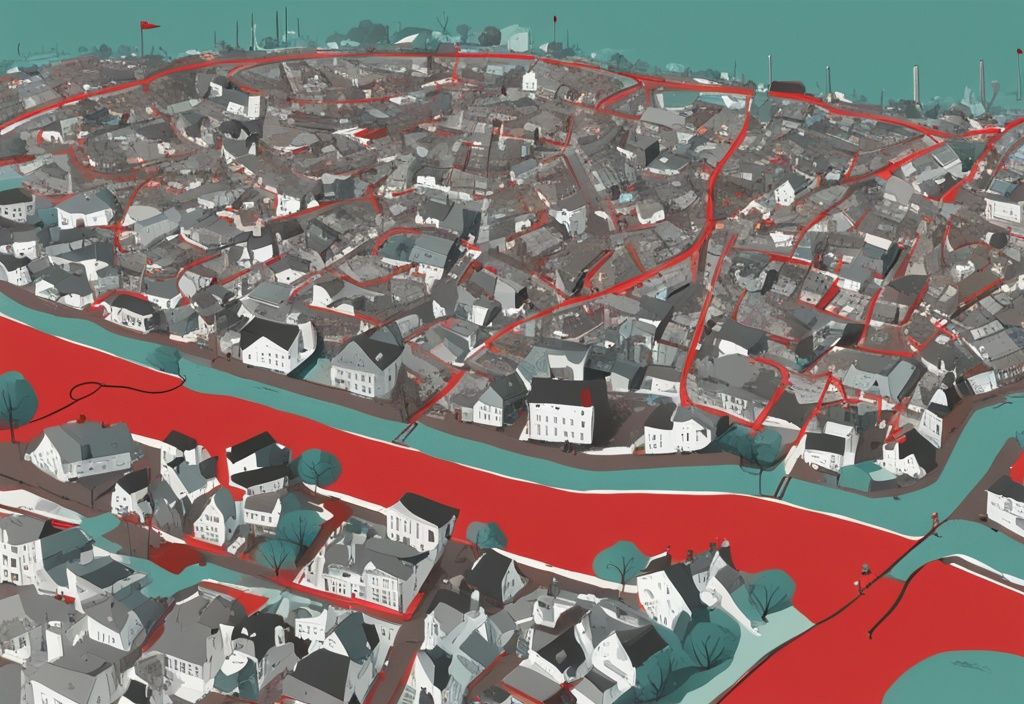Ever been told ‘No’ for a property project because of zoning laws? Well, there’s still hope and it comes in the form of something called a ‘variance in real estate’. Intriguing, isn’t it?
Dive in with me, Alex Harper, as we explore what a variance in real estate is and why it’s the secret weapon in your property dealings. We’ll debunk its complexities and show you how it can enable you to bend some of those rigid zoning rules.
Expect practical solutions, real examples, and a simplified perception that makes this often daunting concept feel like a walk in the park. Let’s discover how variance can transform your real estate challenges into triumphs! With me by your side, you’ll navigate those zoning laws like a pro!
Definition and Importance of Variance in Real Estate
Variances are a crucial tool for property owners looking to introduce flexibility to their projects while staying compliant with local zoning regulations. This section will delve into what variances are and why they matter in property management.
The Concept of Variance in Real Estate
A variance in real estate is essentially a formal plea for a waiver, or exception, from the current local zoning laws. Picture it as asking for special permission to use your property in a unique way that isn’t typically allowed. This permission is usually granted by local governmental bodies. The beauty of a variance is that it introduces the flexibility needed to customize property projects, enhancing their usability and appeal without having to change the zoning rules across the entire area.
Why Variance Matters in Property Management
Imagine you own a piece of property but the zoning rules are a bit too restrictive for your vision. This is where a variance comes in. It enables property owners to legally make physical changes or use their properties in ways that wouldn’t ordinarily be allowed.
Take for example, enhancing the value of a property by making it more functional or visually appealing—such modifications might not be possible without a variance. It’s like having a special card that allows you to make the improvements you need without having to worry about altering the zoning for the whole neighborhood.
Moreover, variances give property managers creative ways to boost property utility. They can explore various possibilities while still playing by the rules of local zoning laws. This not only benefits the property owner by increasing profitability and usability but also contributes positively to the community by ensuring that changes are made thoughtfully and lawfully.
By gaining a solid grasp of what a variance entails, property owners and managers can skillfully navigate through local zoning regulations to accomplish their specific goals and needs. Understanding and utilizing variances effectively can be a game-changer in property management, blending compliance with innovation seamlessly.
The Role of Zoning Laws in Variance
The Concept and Purpose of Zoning Laws
Zoning laws are fundamental to maintaining structure and order within communities by regulating the types and uses of properties in specific areas, as outlined in detail in the zoning ordinance. Think of them as a city’s blueprint to designate land based on its intended purpose, like residential, commercial, or industrial uses. By doing this, zoning laws promote organized development and avert land-use conflicts.
For instance, they help protect public welfare by ensuring properties are used in ways that benefit the community and support sustainable growth. You wouldn’t want a noisy factory right next to a peaceful residential neighborhood, would you? Zoning laws make sure that such mismatches don’t happen, keeping the community’s harmony intact.
Zoning Boundaries: Residential, Commercial, and Industrial
Zoning boundaries precisely define permissible land uses within designated areas to optimize functionality and community harmony.
- Residential Zones: These areas are reserved for housing-related structures like single-family homes, apartment buildings, and multi-family dwellings. Residential zones aim to create safe and livable environments for residents. They often restrict industrial or commercial activities to preserve the neighborhood’s character. Picture living in a quiet area without the constant buzz of commercial activities right next door.
- Commercial Zones: Designated for business activities, these areas accommodate retail stores, offices, and service establishments. Commercial zones facilitate economic activities by providing suitable locations for businesses to thrive without encroaching on residential tranquility. Imagine having your favorite coffee shop or book store conveniently located, yet not disrupting your peaceful home environment.
- Industrial Zones: These zones are tailored for manufacturing, warehouses, and high-impact commercial activities. Industrial zones are crucial for situating these more intense land uses in areas where their operations won’t adversely affect residential or commercial areas. This set-up prevents potential conflicts and nuisances, ensuring that heavy factory operations aren’t a stone’s throw away from your kid’s school.
Different Types of Variance in Real Estate
Variances in real estate can significantly influence property use and development, making it essential to understand the different types and their implications. Here, we’ll dive into two main categories: area variances and use variances.
Exploring Area Variances and Their Common Uses
Understanding what is a variance in real estate is crucial for anyone involved in property management and development. One important type is an area variance, which allows property owners to make physical changes to structures that local zoning laws would typically restrict. Consider this—a home extension to add another room, erecting fences, creating off-street parking spaces, or making adjustments to building height and setback requirements.
These modifications, although seemingly minor, can significantly enhance living conditions or property value. Area variances are generally easier to obtain than use variances. Why? Because they usually have a minimal impact on the surrounding community. Local zoning boards are more inclined to approve these requests when they see that the proposed changes won’t significantly alter the neighborhood’s overall character or lead to adverse effects. For instance, if you wish to extend your home to add another room or build a garage, you might need an area variance if the extension would encroach on required setbacks from property lines. It is also important to understand financial concepts like hypothecation in real estate, which can impact property decisions. These variances allow for meaningful property customization while maintaining community harmony.
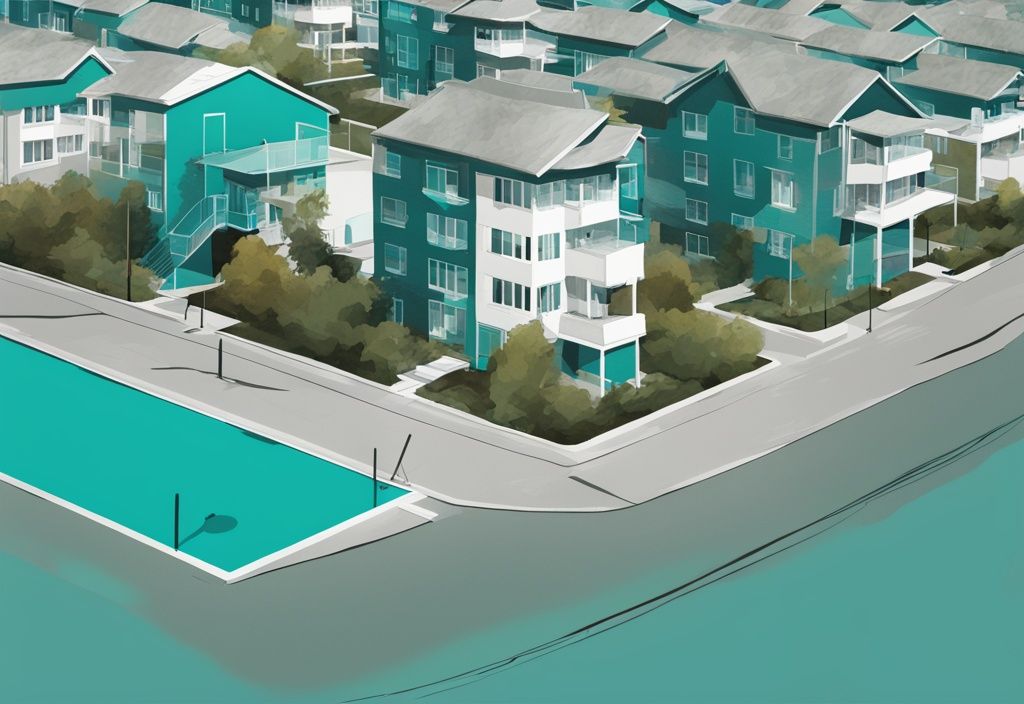
Use Variance: What It Is and How to Achieve It
A use variance is another essential concept when exploring what is a variance in real estate. This type doesn’t deal with physical modifications—rather, it allows property owners to utilize land in ways the current zoning laws do not permit. Imagine wanting to open a small business in a primarily residential area or undertake industrial activities in a commercial zone. That’s where a use variance comes in.
However, obtaining a use variance is tougher due to the potential significant impacts on the community. You’ll need to demonstrate that the current zoning laws cause an undue hardship by preventing reasonable use of the property.
For example, you might show that unique circumstances particular to the property—like its location, shape, or surroundings—make it unsuitable for any permitted uses within the current zoning. Moreover, you’ll have to assure that granting the use variance won’t alter the essential character of the locality, disrupt community plans, or be the result of a self-created hardship.
To succeed, prepare a compelling case backed by solid evidence that demonstrates the necessity and benefits of the variance. This includes detailed explanations, supporting documentation, and potentially testimony from experts or community members to address concerns and suggest mitigation measures. The goal is to show that the variance upholds the public interest, aligns with community development goals, and provides a practical solution to zoning restrictions.
Step-by-Step: The Variance Application Process
Understanding the variance application process is essential when zoning restrictions impede your property plans. Here’s a detailed explanation of the steps, advice, and tips to help you navigate this complex procedure seamlessly.
How to Craft a Persuasive Variance Letter
Creating a persuasive variance letter is like building a strong foundation for your property goals. Start by vividly describing your property and specify the exact variance you’re seeking. Outline the existing zoning restrictions and explain precisely how they limit your property’s potential. This shows your grasp of the zoning laws and highlights your unique needs.
Next, delve into why this variance is not just beneficial but necessary for both your property and the local community. Back up your points with evidence of community support and propose mitigation measures to counter potential concerns. By presenting a thorough and well-supported case, you’ll be more likely to gain approval.
The Necessary Steps in Submitting a Formal Application
Submitting your variance application involves a few critical steps, and it’s important to get each one right. First, gather all needed documents, including property maps, site plans, and any relevant studies, such as environmental impact assessments. These form the backbone of your submission.
Then, fill out the variance application form from your municipal zoning authority, checking for accuracy is vital. Pay any required fees as specified by the local government. Finally, submit your complete package – variance letter, forms, and supplementary documents – to the relevant local office. Following these steps precisely can smooth out the process significantly.
Preparing Your Application: Key Details and Helpful Tips
Preparation is crucial to crafting a compelling variance application. Ensure all documents are complete and accurate to avoid any potential delays or rejections.
Adding photographs and diagrams can visually assist in making your case clearer and more persuasive to the review board. Letters of support from neighbors can further bolster your application by showing communal backing.
Be ready to address typical concerns like traffic congestion, noise levels, and environmental impacts thoroughly. Additionally, consulting a real estate attorney or other professionals can provide valuable insights and elevate your application, enhancing your chances of approval.
A Guide to The Public Hearing for Variance
Ensuring Informed Neighbors and Stakeholders
When dealing with what is a variance in real estate, it’s key to ensure that all nearby property owners and stakeholders are well-informed about the variance request and the details of the public hearing. While local zoning authorities typically send out notifications to the immediately affected parties, taking the initiative to engage with your neighbors can significantly bolster support.
Starting with a clear explanation of what is a variance in real estate helps demystify the process for your neighbors. Highlight the specific benefits your variance will bring to the community, whether it’s improved property aesthetics, better utilization of space, or another positive impact. Informal meetings or one-on-one discussions can be incredibly effective.
Addressing concerns head-on is another vital element. Whether it’s potential noise, traffic increases, or environmental issues, presenting well-thought-out responses and potential mitigation measures can alleviate fears and garner supportive neighbors.
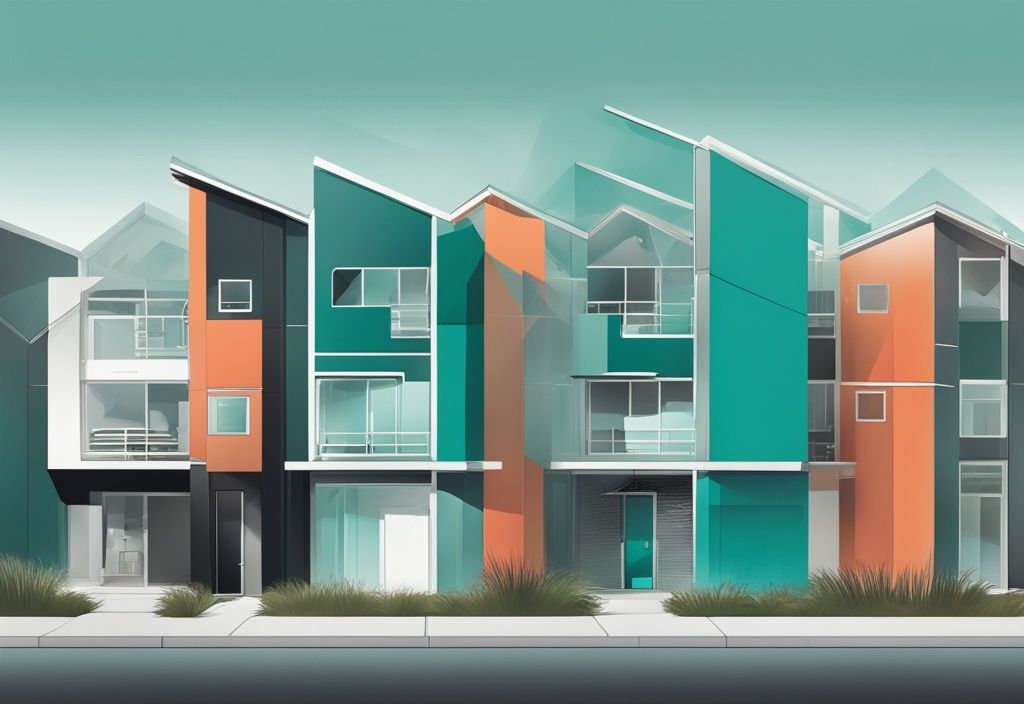
Making Your Case: Presenting Evidence and Addressing Concerns
At the public hearing, your goal is to make a compelling case for why your variance should be granted. Begin by laying out clear, factual evidence that supports your request. This may include property maps, site plans, and relevant studies, all of which help illustrate the necessity and benefits of the variance.
Detail how the variance will positively impact the community. For instance, explain that the proposed changes will enhance property values, improve aesthetic appeal, or solve existing problems like inadequate parking. This can be very persuasive.
Preparing to answer questions from the public and the zoning board is crucial. Understanding what is a variance in real estate and the specific objections that might be raised allows you to prepare informed responses that address these concerns directly. Practice delivering your responses succinctly and confidently.
Highlighting any mitigation strategies to minimize adverse impacts showcases your responsibility and foresight. These might involve design alterations to reduce noise, implementing erosion controls, or managing additional traffic. Presenting these strategies demonstrates your commitment to being a considerate and conscientious property owner.
Mastering the public hearing process for what is a variance in real estate requires thorough preparation, clear communication, and proactive engagement with all stakeholders involved.
Decision Time: Approval, Denial and Possible Appeals
What Zoning Authorities Consider In Their Decision
When local zoning authorities review variance applications, several crucial factors influence their decision on what is a variance in real estate. Let’s break down these factors to see how they shape the outcome.
First and foremost, authorities look at the impact on home values and the neighborhood’s overall character. They assess whether the proposed change might enhance or detract from the area’s appeal and economic value. For instance, think about adding a modern art sculpture in a quaint, historic district—it could either become a conversation starter or stick out like a sore thumb.
Traffic, noise, and environmental effects are also high on the checklist. Imagine a quiet street suddenly flooded with traffic due to a new business—it’s a concern not just for congestion but for noise and potential environmental harm. Zoning boards weigh these considerations carefully to safeguard residents’ daily lives and the surrounding nature.
Next up is the degree of deviation from existing zoning laws. Minor tweaks might get a nod, but significant changes face tougher scrutiny. It’s about preserving order and ensuring that even small changes don’t spiral into broader issues down the line. Consider it like bending the rules of a game—a minor tweak might be ok, but a major overhaul could upset the balance.
Community planning and development goals are another key consideration. Zoning boards want to ensure that any requests for variances align with long-term plans for growth and resource management. If your proposal fits within these goals, your chances of approval rise significantly.
How to Proceed if Your Variance Request Is Denied
If your variance request is denied, it’s not the end of the journey. The first step is to understand why. The decision document will outline specific reasons for the denial, shedding light on critical areas that need addressing.
Next, consulting a legal or real estate professional can offer substantial benefits. They can provide insights and strategic advice tailored to your local zoning laws and practices. For instance, understanding the implications of the grandfather clause in real estate can be crucial in navigating property regulations effectively. Think of them as your navigational guide through a tricky process.
After this, it’s time to gather additional evidence or refine your plans based on the feedback. This might involve creating more detailed site plans, garnering community support, or offering solutions to the issues raised. It’s like tweaking a recipe until it’s just right.
Finally, you’ll need to file an appeal according to local procedures and timelines. Make sure your appeal includes all required documents, revised plans, and any new evidence that bolsters your case. Following the correct protocols meticulously is crucial to ensure your appeal is considered—think of it as meeting a strict deadline for a school project.
By following these steps, you’re well on your way to navigating the often complex world of real estate variances with increased confidence and understanding.
Navigating After Variance Approval
Before diving in, let’s break down what awaits you once your variance is approved. This section covers essential aspects like understanding expiration dates, managing the financial side of things, and recognizing the value of consulting with real estate professionals.
Understanding Variance Expiration and Renewal
Once your variance gets the green light, keep an eye on any associated expiration date. Variances often come with a ticking clock, requiring you to make the approved changes within a set period. Missing this deadline could mean starting the whole process over again. Renewal protocols vary widely depending on local zoning authorities, so it’s wise to stay informed. Regularly check the specific guidelines and procedures for your area to ensure you remain compliant and avoid the hassle of an expired variance.
The Financial Aspects of Obtaining and Maintaining a Variance
Embarking on the journey of securing and maintaining a variance involves several financial considerations. Starting with application fees, you might also need to budget for various studies, such as traffic or environmental impact assessments. These preliminary steps often come with costs that can add up quickly. During the public comment period, there may be additional expenses. Experts like real estate attorneys or brokers bring invaluable insight, although their fees should be factored into your budget. Post-approval, don’t overlook the ongoing costs tied to keeping your variance in good standing, adhering to all the conditions laid out by the zoning board. These financial commitments are vital in planning any property modifications or changes in use.
Why Consulting with Real Estate Professionals Can Be Beneficial
Connecting with real estate professionals can truly streamline your variance journey. These experts bring a wealth of knowledge about local zoning laws and are skilled at navigating the maze of application procedures. Real estate attorneys or brokers can craft compelling variance applications and prep you for public hearings, ensuring every box is checked. Their guidance not only boosts your chances of approval but also helps in strategizing around potential roadblocks or objections. This professional support delivers peace of mind, ensuring your decisions are informed and aligned with legal requirements and your property goals.

FAQs about Variance in Real Estate
In this section, we’ll cover some of the most frequently asked questions about variance in real estate, breaking down the ins and outs of what a variance is, why you might need one, and how the process works. Let’s dive into these common questions and provide clear, practical answers.
Common Questions and Clear Answers about Variance
- What is a variance in real estate? A variance in real estate is essentially a waiver or exception to local zoning laws. Think of it as getting permission to use your property or make modifications that aren’t typically allowed under the current zoning regulations.
- Why might you need a variance? You might need a variance if you plan to use your property in a unique way or want to make physical changes that don’t align with your area’s zoning laws. For instance, if you’re looking to build an addition that would extend into the setback area of your property, a variance could grant you the flexibility to do so.
- What is the difference between area and use variances? Area variances allow for physical changes to a property, like altering building dimensions. Use variances, on the other hand, permit the property to be utilized in a way that current zoning laws typically prohibit. For example, converting a residential property into a small business venue might require a use variance.
- How long does obtaining a variance take? The timeline for obtaining a variance can vary widely, but it usually takes several weeks to several months. This period includes preparing the application, undergoing reviews, and attending public hearings. For those interested in understanding more about unique real estate scenarios, such as avulsion in real estate, it can be beneficial to explore related topics. It’s not a quick process, so planning ahead is key.
- Can a variance be revoked? Yes, a variance can be revoked under certain conditions. If there are misrepresented facts in the application, if the required conditions aren’t met, or if the original need for the variance no longer exists, the local zoning authority can revoke it.
- Does a variance stay with property ownership changes? Absolutely, once a variance is granted, it stays with the property even if the ownership changes. This means the new owner will benefit from the same variance approved for the previous owner.
- Who decides on variance applications? The decision on variance applications typically rests with the local zoning authority or municipal government. These bodies review the applications, consider any community feedback during public hearings, and make the final determination.
Wrapping Up Variance in Real Estate: The Key Takeaways
Flexibility Within Zoning Laws for Specific Property Uses and Modifications
When diving into what is a variance in real estate, it’s like discovering a secret key that unlocks flexibility within rigid zoning laws. These variances act as waivers, allowing property owners to modify or use their properties in ways that standard regulations might not permit. Imagine wanting to add a cozy little coffee shop in a residential zone; the variance makes that dream possible. This flexibility is critical for customizing properties and embarking on specific development projects, all while staying aligned with the community’s broader planning objectives.
The Formal Application Process and Public Involvement
Applying for a variance is a bit like preparing for an important presentation; it requires thorough preparation, detailed documentation, and adherence to specific procedures. You’ll need to craft a persuasive variance letter, gather all the necessary documents, and submit a formal application to the municipal zoning authority. Picture it as a somewhat bureaucratic but essential hurdle. Additionally, public hearings play a crucial role, allowing community members to voice their support or concerns. Successfully navigating this process means understanding the requirements and effectively engaging with all stakeholders, just like nailing that big presentation.
Importance of Understanding Types of Variances and the Application Process
Think of variances as coming in two flavors: area and use. Knowing the difference is crucial for property owners. Area variances usually involve changes to physical structures—picture tweaking a house extension. Use variances, on the other hand, allow for land uses that don’t stick to the norm—like setting up that coffee shop in a residential zone. Understanding the specific requirements and potential impacts of each type is essential. A well-prepared application that addresses zoning restrictions and highlights community benefits can significantly boost the chances of approval, paving the way for legally sanctioned property enhancements.
Consulting Real Estate Professionals for Improved Success
Engaging with real estate professionals can be a true game-changer in the variance application process. Picture having a seasoned tour guide while trekking an unfamiliar path—real estate attorneys and brokers bring valuable insights into local zoning laws and procedural nuances. They can assist in crafting compelling applications, preparing for public hearings, and ensuring compliance with all necessary requirements. Their professional guidance not only smooths the application process but also enhances the likelihood of a favorable outcome, helping you realize your property vision while staying within legal bounds.
Hi, I’m Alex Harper, a real estate expert with over ten years of experience in property management and legal advice. My passion is making the often complicated world of real estate understandable. I share practical tips and simple solutions to help you make better decisions – whether you’re buying a home, renting or just want to learn more about the industry. With my knowledge and experience, I want you to feel well-informed and confident in your real estate projects. Let’s tackle this together!


